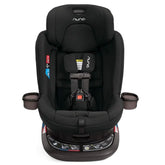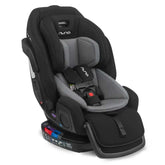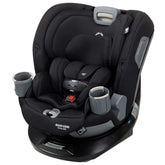Feeding Schedule: How Much Should a 3- to 6-Month-Old Eat?

Introducing your baby to a healthy feeding routine during the 3 to 6-month age range is an exciting milestone. This period is crucial for your little one’s development, as they transition from exclusive milk feeding to sampling their first solids. In this comprehensive ANB Baby guide, we’ll explore how much a 3- to 6-month-old should eat, feeding guidelines for formula-fed and breastfed babies, and a 3- to 6-month baby food chart to help you create a smooth feeding schedule. Let’s dive in!
Understanding the Basics: How Much Milk Should a 3- to 6-Month-Old Baby Have?
From 3 to 6 months, breast milk or formula remains the primary source of nutrition for your baby. On average, babies at this stage need about 24 to 36 ounces of breast milk or formula daily, according to the American Academy of Pediatrics. Breastfed babies typically nurse every 3 to 4 hours, while formula-fed babies may follow a similar schedule but consume slightly larger portions per feeding.

Feeding Guidelines for a 3-Month-Old: How Often Should a 3-Month-Old Eat?
At 3 months, most babies are still exclusively breastfed or formula-fed. Breastfed babies may require more frequent feedings since breast milk is digested faster than formula. Here’s what you can expect:
-
Breastfeeding: Breastfed babies nurse approximately 8 to 12 times in 24 hours, consuming about 2 to 4 ounces per session.
-
Formula Feeding: Formula-fed babies take about 4 to 6 ounces per feeding and eat 5 to 8 times daily.
-
Hunger Cues: Watch for signs like sucking on hands, rooting, or fussiness to know when your baby is ready to eat.

3- to 6-Month-Old Feeding Guide for Breastfed Babies
Breastfed babies may follow slightly different schedules based on their individual hunger cues and nursing preferences. Remember, breast milk adapts to your baby’s nutritional needs and is designed to be their primary source of nourishment. During this phase:
- Aim for 6 to 8 nursing sessions in 24 hours.
- Offer solids after breastfeeding to avoid displacing milk intake.
Introducing Solids: 6-Months Feeding Guide with Solids
Introducing solid foods to your baby is an exciting milestone, but it can also feel overwhelming with so much advice from family, friends, and the internet. The American Academy of Pediatrics (AAP) provides clear guidelines to help you navigate this transition smoothly. Here’s everything you need to know about when and how to start solids, along with tips to make the process easier for both you and your baby.
When Can My Baby Begin Solid Foods? Signs Your Baby Is Ready for Solids
Every baby develops at their own pace, so readiness for solid foods depends on several key signs. According to the AAP, your baby may be ready for solids if they meet the following criteria:
| Signs of Readiness | What to Look For |
|---|---|
| Head Control | Baby can sit upright with steady head control. |
| Interest in Food | Baby watches you eat, reaches for food, or seems eager to be fed. |
| Swallowing Ability | Baby can move food from a spoon to their throat (even if some dribbles out at first). |
| Weight | Baby has doubled their birth weight and weighs at least 13 pounds. |
Note: The AAP recommends exclusive breastfeeding for approximately 6 months. After 6 months, you can introduce solid foods while continuing to breastfeed for 2 years or beyond, as desired. Always consult your pediatrician about vitamin D and iron supplements during the first year.
How to Feed Your Baby Solids
Starting solids is a gradual process, and patience is key. Here’s how to make the experience positive for your baby:
-
Start Small: Begin with half a spoonful or less. Talk to your baby during the process to make it enjoyable (“Mmm, see how good this is?”).
-
Combine with Milk: Offer a little breast milk or formula first to prevent frustration, then introduce small amounts of solid food, and finish with more milk.
-
Expect Mess: Most of the first few feedings will likely end up on your baby’s face, hands, and bib. Gradually increase the amount of food, starting with just a teaspoon or two.
-
Follow Their Cues: If your baby cries or turns away, stop feeding and try again later. Solid foods are supplemental at this stage—breast milk or formula remains their primary source of nutrition.
-
Avoid Bottles with Cereal: Do not mix cereal into a bottle unless recommended by your pediatrician for specific conditions like reflux. This can lead to choking or overfeeding.
Sample Baby First Foods for 6-Month-Old
When introducing solids, start with single-ingredient, easy-to-digest foods. Here are some great options:
| Food Type | Examples | Notes |
|---|---|---|
| Cereals | Iron-fortified rice or oatmeal cereal | Mix with breast milk or formula for a thin consistency. Gradually thicken. |
| Vegetables | Mashed carrots, peas, sweet potatoes | Steam and puree for a smooth texture. |
| Fruits | Pureed bananas, pears, or apples | Ensure fruits are ripe and mashed to avoid choking hazards. |
The Cleveland Clinic recommends introducing one new, single-ingredient food at a time and wait a day or two before adding another to monitor for potential allergies.

Encouraging Healthy Feeding Habits in Your Baby
Establishing good eating practices early lays the foundation for lifelong healthy habits. Here are some tips:
- Follow Your Baby’s Lead: Allow them to decide how much to eat by responding to hunger and fullness cues.
- Eat Together: Create a positive mealtime environment by including your baby in family meals.
- Avoid Force-Feeding: Let your baby explore new textures and flavors at their own pace.
- Stay Flexible: Every baby is unique, so adjust your approach based on their preferences.
Shop Premium Feeding Supplies for Your Little One at ANB Baby
Feeding your baby from 3 to 6 months is a rewarding experience that sets the stage for their growth and development. Whether you’re looking for high-quality feeding essentials, baby food prep tools, or helpful resources, the ANB Baby website has everything you need to make this journey smooth and enjoyable. Explore our collection of products tailored to support you from pregnancy through the toddler years!










